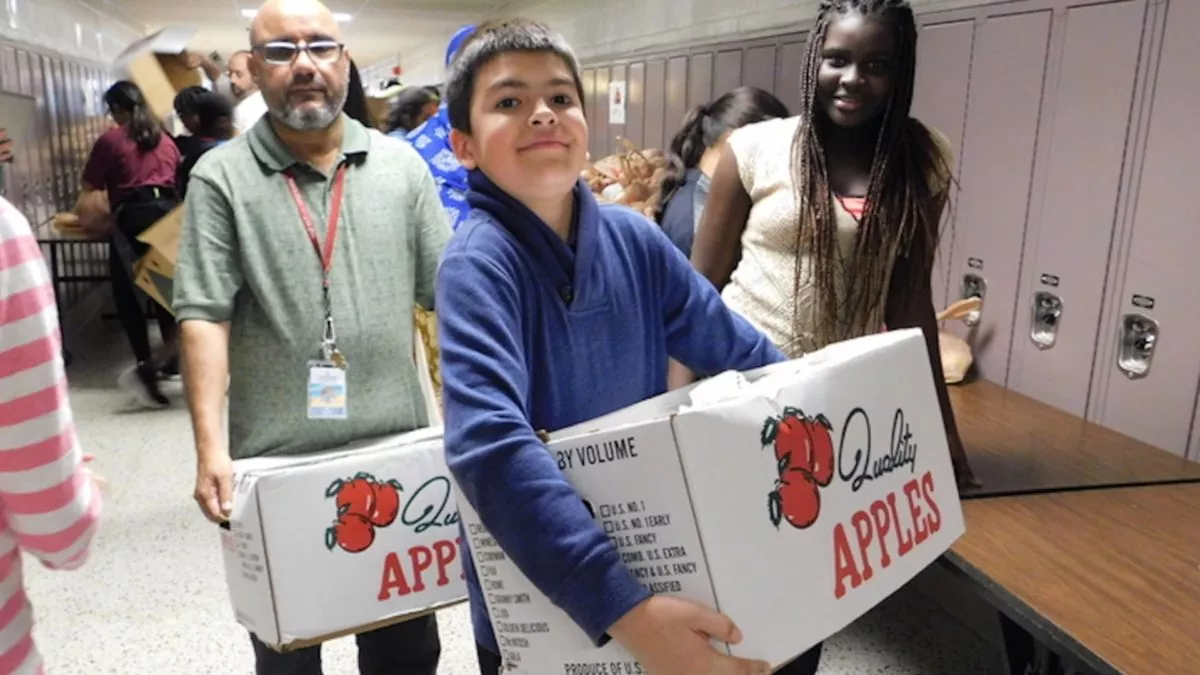A new bill in Congress looks to increase federal support for a school model that reimagines how to help students learn—by first making sure their basic needs are met. Sen. Sherrod Brown (D-Ohio) and Rep. Mondaire Jones (D-N.Y.) introduced the Full-Service Community School Expansion Act on Tuesday.
Research supports what educators know from experience: Students living in poverty do not have the same opportunities because they face barriers that their wealthier peers do not.
Children who are hungry, experience homelessness, or bear other stresses of their family’s financial hardship can’t always focus, participate in class, or complete assignments—and that’s if they can make it to school at all. Students of color are more likely to experience these conditions—the result of inequities built into a system that protects white supremacy.
Some districts are working to counteract these factors by establishing community schools, in which educators, administrators, students, and families work together to achieve their vision for the schools and communities.
That collaboration results in schools that might provide medical, dental, and mental health care on-site; a food pantry or backpack nutrition program; clothing; after-school tutoring and mentoring, culturally relevant curriculum that reflects the diversity of the student body; and supported educators that have the resources and tools they need to educate their students. They might even serve entire families, with job placement assistance, English classes, referrals to social service agencies, and nutrition and health services.
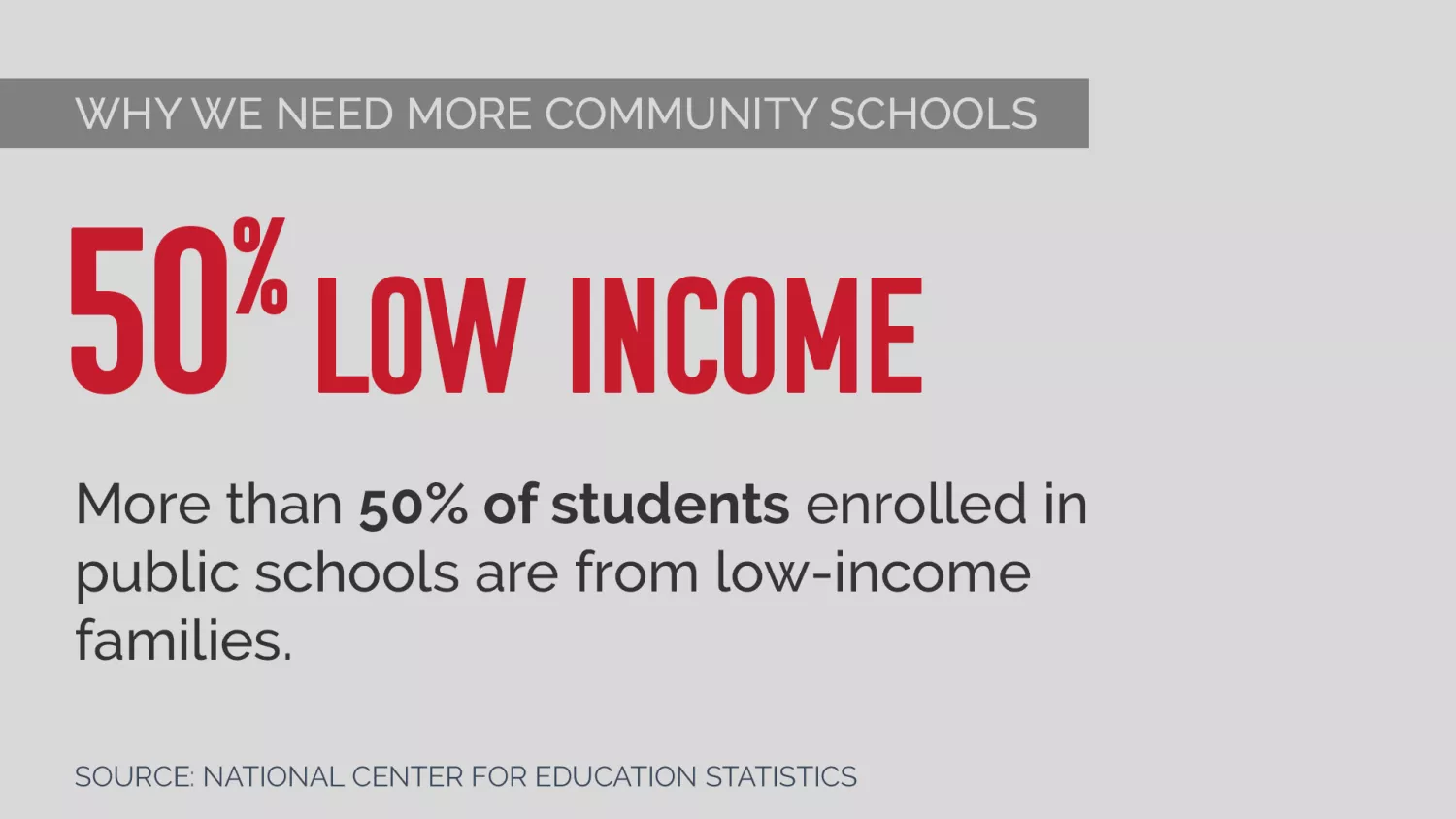
“We have learned from decades of school improvement efforts that there isn’t one single powerful lever or magic bullet that will generate equitable outcomes in schools.,” said Kyle Serrette, a senior policy analyst in NEA’s Teacher Quality department. “Instead we’ve learned that education equity requires the identification of hundreds of specialized levers that, when pulled, make key positive changes in their particular schools and communities.
“The Community School strategy is a powerful and proven engine of educational equity because the strategy identifies the correct levers and mobilizes school and community stakeholders to pull the levers together,” Serrette said.
A “beacon of hope and light”
In the COVID-19 era, community schools have provided a shining example of resilience, continuing to serve students most in need.
These schools have proven to be invaluable in Los Angeles, where educators successfully negotiated for 30 new community schools following a 2019 strike. Seventeen of them are already operational.
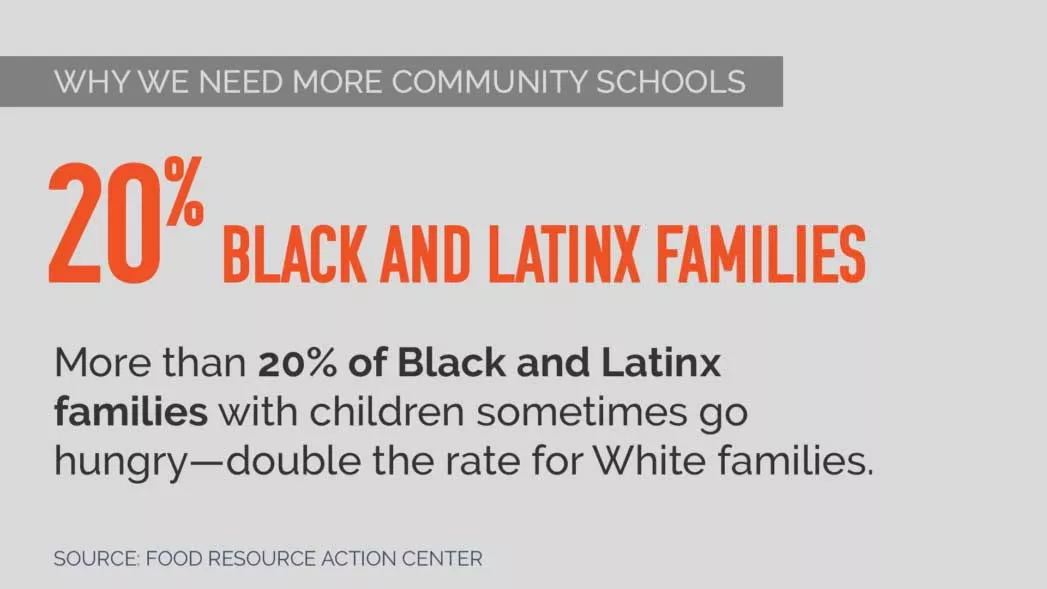
Community schools have been a “beacon of hope and light” for vulnerable families surviving the pandemic, says United Teachers Los Angeles (UTLA) President Cecily Myart-Cruz. They have distributed food, clothing, and holiday meal kits, and some even started gardens to help feed local families. That’s a big deal in south-central L.A., “where there are food deserts everywhere,” Myart-Cruz says.
What makes the model work, she adds, is that the community is involved from day one in planning what the school will offer.
“It has to be educators in conjunction with the community, working hand-in-hand,” Myart-Cruz explains. “Where we come in as UTLA is helping to shepherd the process and continue to advocate for our most marginalized communities.”
Community schools provide solutions, and not just in large cities. They have proven successful in rural and suburban settings as well.
In the years before COVID-19 hit, more than 50 percent of America’s public school students were already living in poverty. That rate is expected to keep rising nationwide among families with school-age children as the full effects of the pandemic emerge in the coming years.
How Congress can help
The potential for community schools to help hard-hit communities recover from the pandemic is not lost on some leaders on Capitol Hill.
“Now more than ever, we must invest in our public schools to ensure our students and families have access to the basic physical, mental and nutrition health services they need to keep them healthy and safe,” said Sen. Brown.
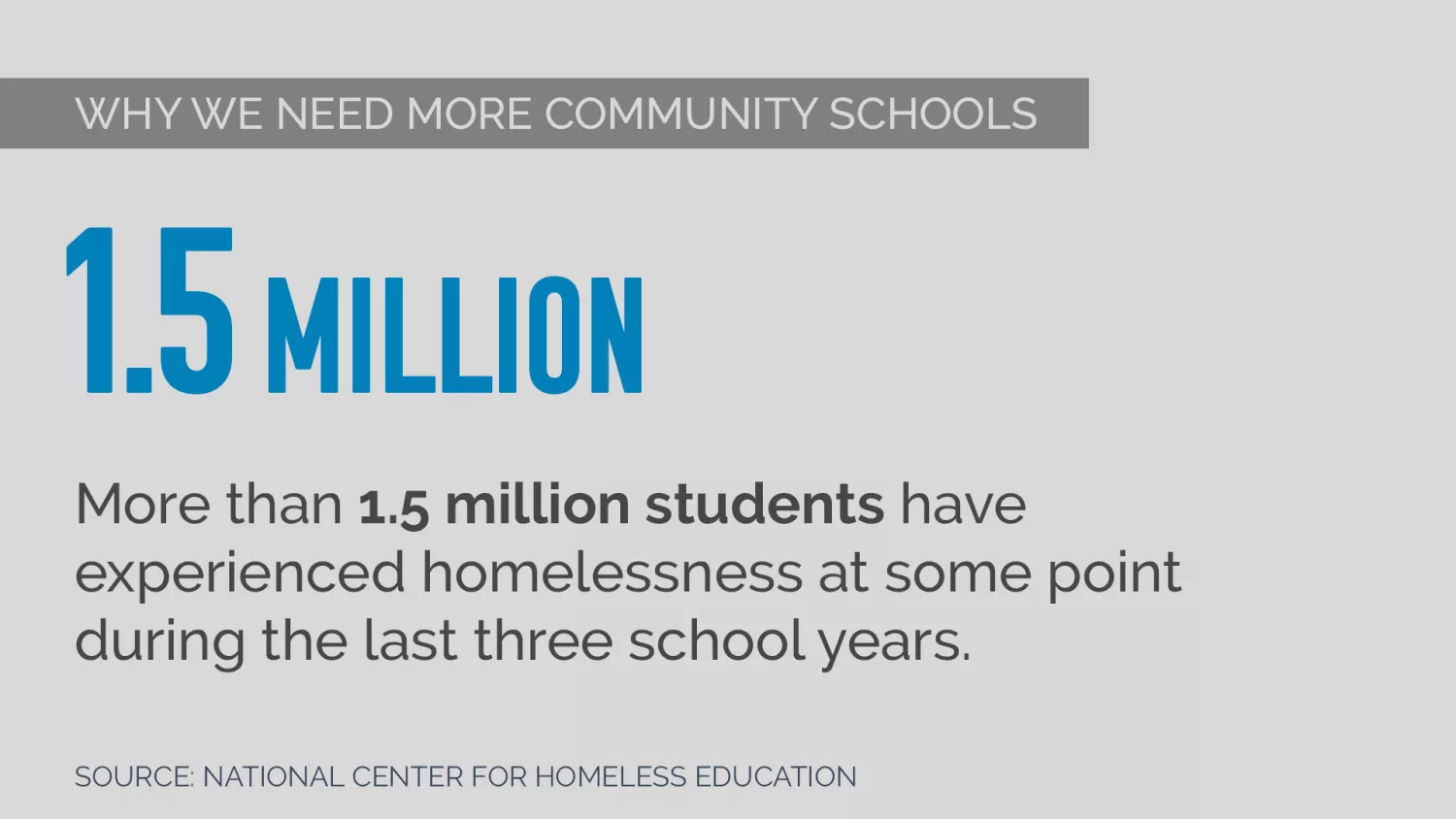
Rep. Jones sees the potential of investing in community schools as a way to focus on equity during pandemic recovery. “As we work to ensure an equitable recovery from the COVID-19 crisis, community schools are one of the most effective tools to close gaps in educational attainment and ensure that students, families, and entire communities have the support they deserve.”
The Full-Service Community School Expansion Act will:
- Invest $3.65 billion over five years to plan, implement, expand, and support full-service community schools serving low-income students;
- Provide renewable grants and other resources to existing community schools to build collaborative leadership structures and strengthen wraparound services that support the needs of students, families, and neighborhoods, including healthcare, nutrition, and early childhood education.
- Build out community school infrastructure by funding state-level teams that provide professional development and resources for community school staff.
- Work with schools to develop and implement restorative justice principles.
- Provide technical assistance to leverage federal, state, and local resources that address the needs of expanding community schools.
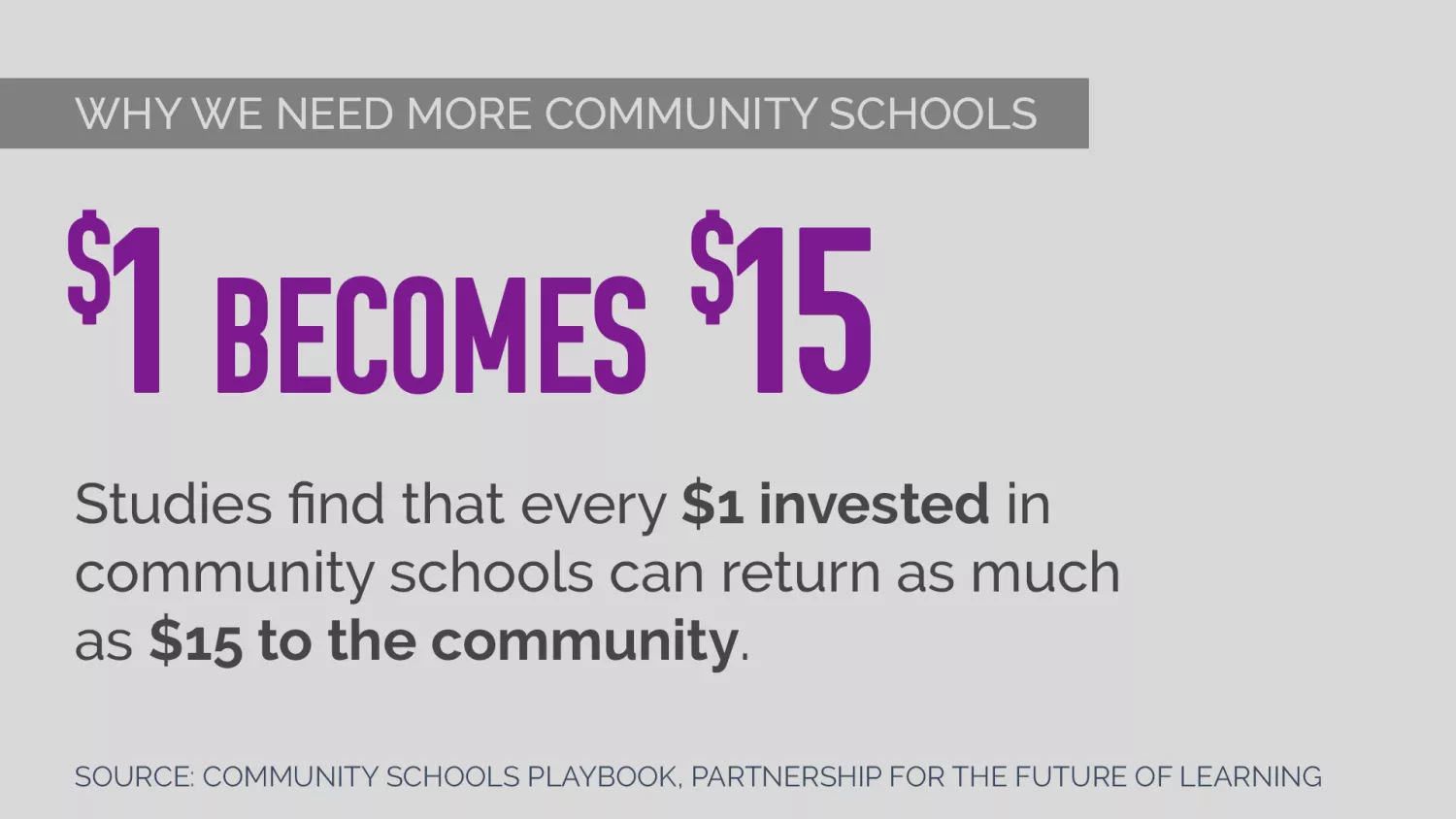
The Coalition for Community Schools and its national, state, and local partners, including the National Education Association, support the Full-Service Community Schools Expansion Act, which reflects the current best practices of community schools and includes funding to begin to meet the high need and demand across the country for this evidence-based strategy.
“All children, no matter their race or ethnicity, gender or gender expression, no matter where they come from or where they live, deserve a safe and welcoming school where they can thrive. Community schools play a critical role in delivering tremendous educational opportunities for students while also offering hope, opportunity and transformation to entire communities,” said NEA President Becky Pringle.
